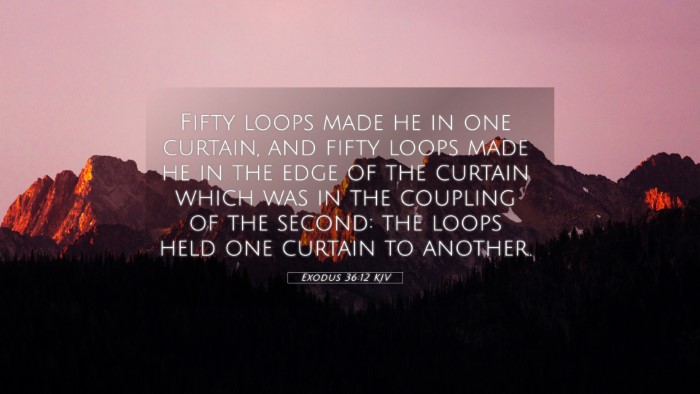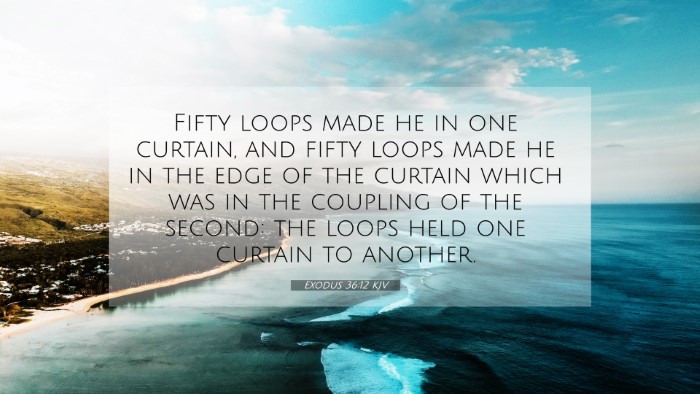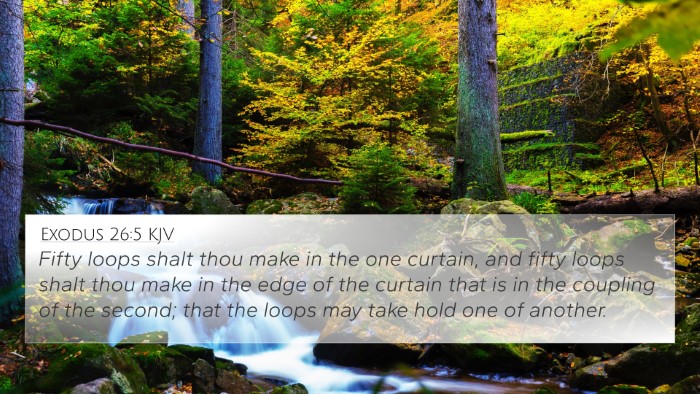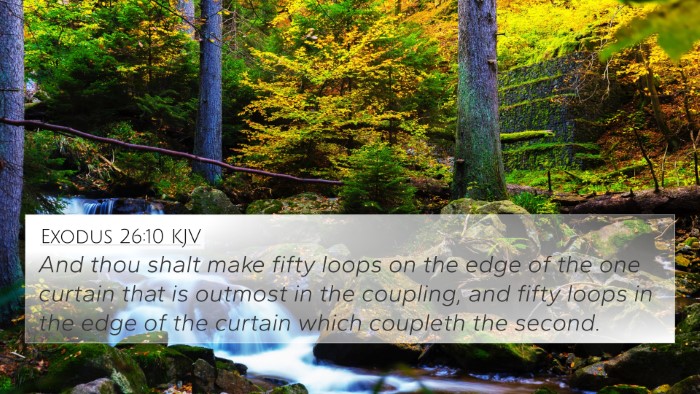Exodus 36:12 reads: "One was a cubit and a half long, and the other a cubit and a half long: they were of a piece; the two ends of the cherubim were of one piece." This verse describes the construction of the cherubim that were part of the Tabernacle, highlighting their detailed craftsmanship and the sacred role they played in the ancient Israelite worship.
The verse reflects the precision and intentionality in God's design for the Tabernacle, symbolizing His presence among His people. Various public domain commentaries provide insights into the meaning and implications of this verse.
Commentary Insights
-
Matthew Henry:
Henry emphasizes the significance of every part of the Tabernacle being crafted with care. The cherubim were not merely decorative; they represented the divine guardians of the holiness of God, suggesting that every detail points to God's glory and majesty.
-
Albert Barnes:
Barnes elaborates on the mention of the two cherubim and their unity in construction. He notes that this reflects the unity of purpose in worship and the importance of unity in the worshiping community. The construction of the cherubim also represents the interaction between God and humanity—how God's presence dwells among His people.
-
Adam Clarke:
Clarke provides a detailed look at the significance of cherubim in biblical theology, explaining that they not only serve a protective function but also symbolize the presence of God. The imagery of cherubim often links to God's covenant with His people, marking the sacred space of worship.
Cross-References
The study of Exodus 36:12 can be enriched through various cross-references that deepen the understanding of its themes. Notable connections include:
- Genesis 3:24: Here, cherubim are placed to guard the way to the Tree of Life, indicating their role as guardians of holiness.
- 1 Kings 6:23-28: The construction of the cherubim in the Temple is described, showing continuity in their symbolic function.
- Ezekiel 10:1-22: Ezekiel's vision of cherubim elaborates their divine nature and association with God's glory.
- Hebrews 9:5: Mentions the cherubim overshadowing the mercy seat, reiterating their role in the sacrificial system.
- Psalm 80:1: Describes God as dwelling between the cherubim, highlighting the connection of God's presence with worship.
- Exodus 25:18-22: Discusses the command to create cherubim for the mercy seat, tying closely to Exodus 36:12.
- Revelation 4:6-8: Cherub-like beings in the heavenly realm, reinforcing the link between the earthly Tabernacle and the heavenly throne.
Understanding Through Cross-Referencing
This verse opens avenues for thematic Bible verse connections. By examining passages that correlate with both the symbolism of the Tabernacle and the cherubim, one can glean deeper insights into God's intention for worship and His desire for intimacy with His people. Utilizing tools for Bible cross-referencing can enhance this study.
Exploring links between Exodus and the New Testament, such as the connection of cherubim to Christ's redemptive work, can provide comprehensive insight into God's overarching narrative of redemption. In particular, the parallels between the Old Testament's sacrificial system and its fulfillment in Christ represent a significant aspect of Biblical theology.
Tools for Bible Cross-Referencing
- Using a bible concordance allows for easy identification of related themes and occurrences.
- Employing a bible cross-reference guide helps to navigate connections effectively.
- Engaging in cross-reference Bible study can illuminate connections that might otherwise be overlooked.
Thematic Connections and User Intent
Those searching for related Bible verses often inquire about the connections between specific passages. Exodus 36:12 may particularly resonate when looking at themes such as God’s holiness, divine protection, and the significance of worship.
Questions may arise like:
- What verses are related to Exodus 36:12?
- How do Exodus 36:12 and Ezekiel 10 connect?
- What Bible verses support the themes of worship in Exodus 36?
Conclusion
Exodus 36:12 stands as a profound testament to the intricate design of the Tabernacle, which serves as a constant reminder of God's desire to dwell among His people. Its echoes can be traced through various biblical texts, enhancing our understanding of the sacredness of worship and the presence of the divine in our midst.
Utilizing cross-referencing and exploring thematic connections can provide rich insights for anyone engaging in scriptural study, offering a layered understanding of how biblical texts relate to and illuminate one another.




